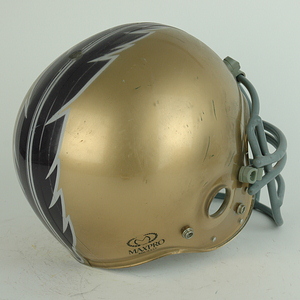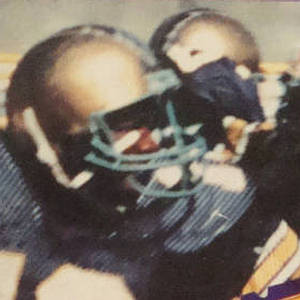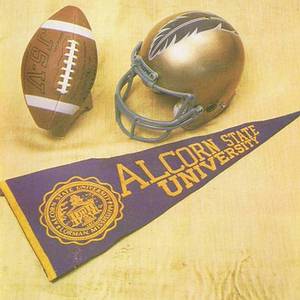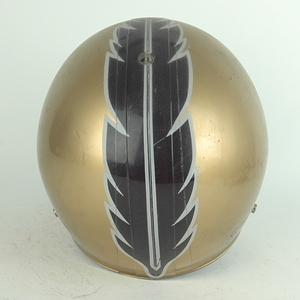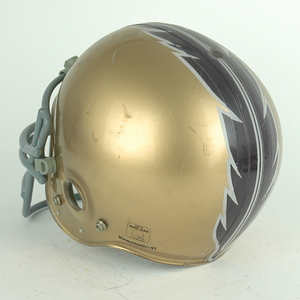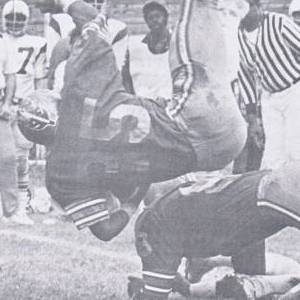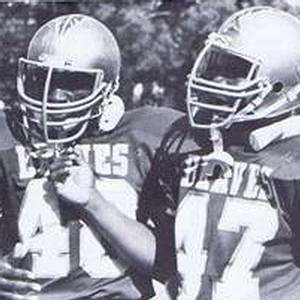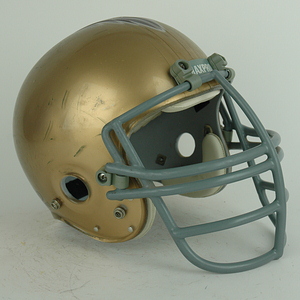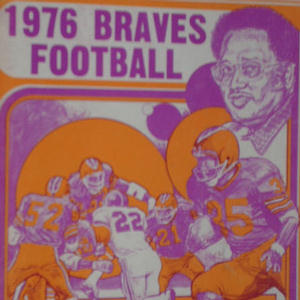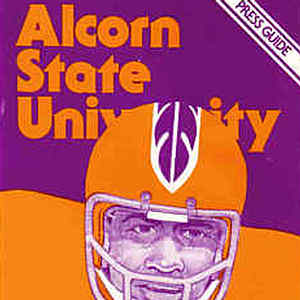To the general public
Historically Black College football may have been a term they had heard but
had little actual knowledge of until the mid to late-1960’s. By then it was
obvious that many star players of both the National and American Football
Leagues had not attended the “usual” major colleges nor the smaller ones
that may have had a local reputation for “good football.” Certainly it may
be safe to presume that “Grambling” was the primary reference for the casual
college football fan’s interpretation of “Black College Football,”
especially with more alumni in the pro ranks in 1969 than any school other
than the hallowed Notre Dame. The documentary film “100 Yards To Glory”
brought Grambling’s pipeline to professional football before the public eye
and the national broadcast was a hit in large part because its producer, the
brash Howard Cossell was also its “front man,” Grambling may have become
synonymous with “Black College Football” but there were many schools that
made up the collective term and each had a lengthy history of its own and
often, a lengthy history of excellence.
As African American
players began to play a greater role in their team’s success, professional
football scouts like Lloyd “Judge” Wells with the Chiefs and Bill Nunn with
the Steelers literally mined the Historically Black Colleges, bringing the
signatures of some of the game’s greatest players to their respective teams.
Wells success earned the AFL the reputation of having given black players
what was perhaps their first fair chance to enter professional football. As
more black players earned star status, the football public noted that there
were in fact numerous Historically Black Colleges with very good teams and
very good players. Alcorn Agricultural & Mechanical College in Lorman,
Mississippi, renamed Alcorn State and granted full university status in
1974 was one of these and they were usually quite competitive. Though
fielding teams since 1922, it was the Braves entry to the Southwest Athletic
Conference in 1962 that brought it onto a larger national stage. However it
wasn’t until Marino Casem took the reins as head coach in 1964 that the
Braves made a splash that brought true national recognition. Casem, a
member of the College Football Hall Of Fame, came to Alcorn after one season
as head coach at Alabama State and remained in Lorman through the 1985
season. In those twenty-two years he earned the nickname “The Godfather Of
The SWAC” which was eventually shortened to “The Godfather.”
His impressive record included four Black
College National Championships, seven Conference crowns, and an undefeated 1984
squad that was ranked number one in the nation at the Division 1AA level.
Famous for his enthusiasm, flamboyance, and oft-repeated quote,
"On the East Coast, football is a
cultural experience. In the Midwest, it's a form of cannibalism. On the West
Coast, it's a tourist attraction. And in the South, football is a religion, and
Saturday is the holy day," it is sometimes forgotten that his X’s and O’s
knowledge made him a multiple time finalist and winner of the National Black
College Coach Of The Year Award.
The Alcorn State
Braves were dressed for success at all times in their gold and purple uniforms.
The mid-1970’s through the mid-1980’s featured a unique feather helmet design
that did change a bit over the years, reminding one of the beautiful headgear
worn by the Washington Redskins from 1958 through ’64. Tight end Jimmie Giles
and secondary mates Roynell Young and Leslie Frazier were among the Alcorn State
Braves who had the privilege of wearing the feather helmet. Giles starred in the
NFL for thirteen seasons, most with the Buccaneers while Young became the
Braves' initial first round draft choice. Frazier of course was a member of the
1985 Chicago Bears Super Bowl team and is currently the head coach of the
Minnesota Vikings.
Among an array of beautiful and unique uniforms worn by Historically Black
College teams throughout the 1970’s and ‘80’s, the gleaming gold helmet with
a purple and white feather that extended from approximately two inches above
the wildcat sweatband to the rear border of the helmet shell was one of the
best. An outstanding design, the purple and gold combination carried Casem
and the Braves through many successful seasons much to the delight of their
fans.


